

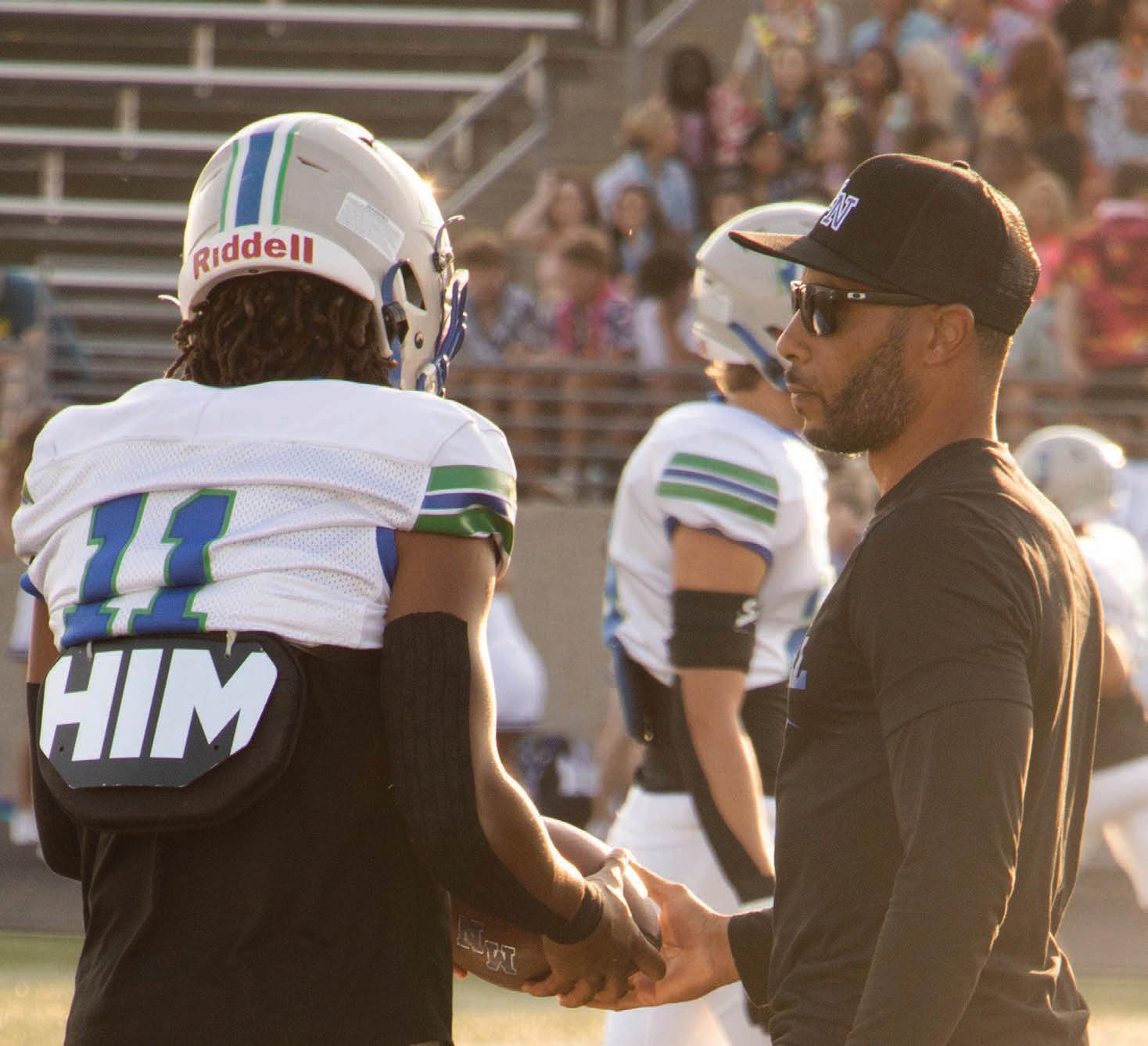




New head football coach marks the beginning of a new vision, goals for the program MIA CASTRO
Editor-in-Chief
The evening sun lowers over Allen Burrell Jr.’s cap, his eyes squinting against the falling amber light. The sour smell of hot plastic turf fills Burrell’s nostrils as his heart beats loudly, the student section’s countdown to the beginning of the match chanting in the back of his head.
The whistle screeches, declaring the start of a battle between two familiar foes: Millard North and Millard West. Both teams have something to prove, but Burrell and the new Mustang squad hold something different tonight.
They have a reputation to uphold, or rather to create.
Burrell, the new head football coach, joins the blue and green from Mount Michael Benedictine School, also becoming the first Black head football coach in Millard history. With 19 years of coaching experience and plenty of time on the field himself, Burrell isn’t here to mess around.
“I’ve always felt like Millard North was home. It was the first coaching job I got in Nebraska. Coach Petito took me under his wing… [and] he believed in me. So I kind of embraced the community and [want to show] the same kind of love likewise,” Burrell said.
As one of Burrell’s new changes, his coaching staff and he have developed a path-blazing new training agenda for the football program. Burrell explains that he plans to keep some of the conditioning techniques that have worked in the past and work them into something new.
“I’m a big track guy. I’m a firm believer in speed. Speed and making athletes more explosive: that’s my philosophy… I mean, we live to get fast and we run to get fast,” Burrell said. “So, I focus more so on the speed component and the whole movement thing. We do still enjoy the weight room, but yes, it is a little different.
The team does three days of strength training and two days of speed work during the week, compared to past seasons’ strength training four days a week and running once a week. Coupled with explosive lifts, throwing exercises, more Olympic-style training, and a new onfield setup, the team is looking sharper than ever.
“He’s [Burrell] changed up the
offense and defense. This new thing is definitely going to help us a lot in the next games,” senior player Rocky Chavez said. “...He’s all about speed this year and he’s not taking no for an answer,”
Burrell hopes this new training regime will take the program back to its “glory days”, as they’re often referred to, from [2012-2017] when Millard North dominated Class A football. The players are in the same mindset, hoping to reclaim the school’s throne.
“This is a start… we’re definitely more confident this time around. We just have to take it week by week and try to get those wins every week. That’s our mindset,” senior player Caden Vermaas said.
Burrell, who isn’t afraid to try new tactics to achieve the goals at hand, holds a unique, indepth style of coaching, centralized around some principles not many coaches highlight. First, Burell is cracking down on academics, tardies, and impressions.
“The team can’t have fours or fives or we have to run. He [Burrell] wants to make sure we’re on time to school and practice or he has the entire team running… it’s a team thing, so we all have to pay for it [poor grades and tardies],” Vermaas said. “It’s good because it helps the team and helps you grow as a person. We’re student-athletes first, you know what they say,”
This new plan of Burell’s has been successful, to say the least, with the team GPA rising with this recent directive.
At the same time, Burrell knows that football is more than recreation and school for many on his team. He wants to teach his players to develop off the field, to grow into kind, strong people.
“Coach Burrell is… there’s a lot of ways to describe Coach Burrell… He can get down into the nitty-gritty of football, he’s a great coach on the training side, but he’s even better on the relationship side,” football defensive coordinator Adam Mohning said. “Understanding the bigger picture, trying to make a way for all the kids, from the allstate level players to the kids who just want to be part of a high school football team, he’s good at including everyone,”
All together, the head coach’s pristine, holistic approach to the football field is appreciated by his players. The team got to see this new plan in action on Aug. 30 for the first game of the 2024 season against the rivals farther west, the Millard West Wildcats.
In a close game, the Mustangs held on for a 29-21 victory, clenching the first win against the Wildcats since the 2015 NSAA Football State Championship. The Mustang squad celebrates this win and holds it as a reflection of the progress they’ve made with the new training agenda and the coaches’ perpetual support.
“We were hungry to win. We had lost so many years in a row against them so we knew we had to get it done,” Vermaas said. “The coaches had us mentally prepared and were saying the right things and always believing in our abilities,” Vermaas said.
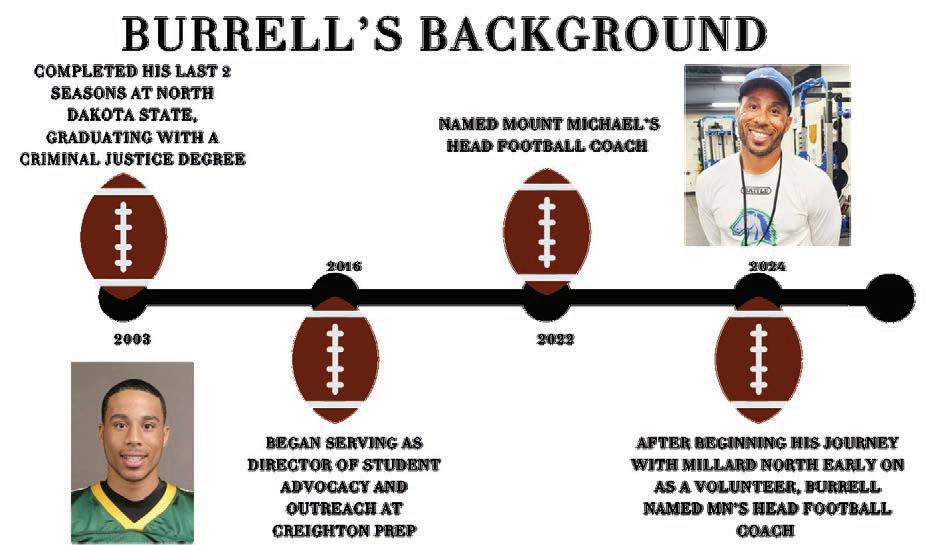
Burell, as Vermaas stated, cares about his players as more than just athletes, but as whole people, on and off the field. With Burell leading the way, MNFB should prepare to reach for the stars, or rather, the gold.
“I just try to lead them well and be inspiring, you know… I know it’s a game, but I try to use this game as a tool to teach life, as well as to guide young men,” Burell said. “I hope I can impact their life in some positive way.”
“ wantsCoach us to learn how to tie ties and inprofessionalbe everything we do.He says it turns us into better men. I think it's good for us, just because then people know how to dress up in the future.It's enjoyable. I think it's worth it.”
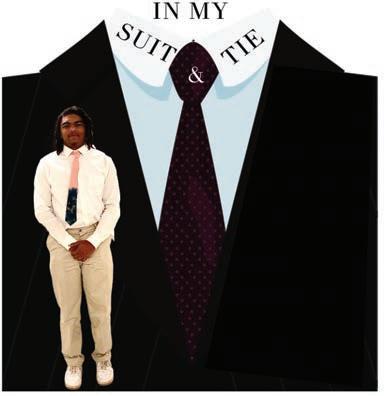
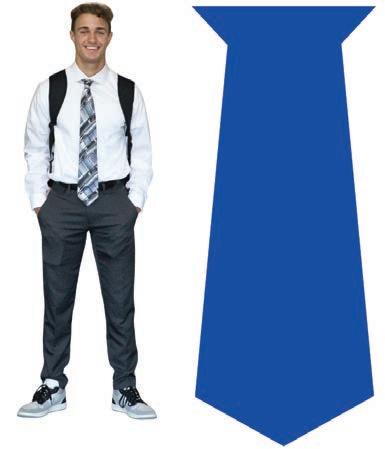
“It’s for our team to stand out and come together as a team. So instead of walking around with just our jerseys on, we’re bonding together to stand out in formal attire. I like it very much. It’s an organized way to look around the school day.”
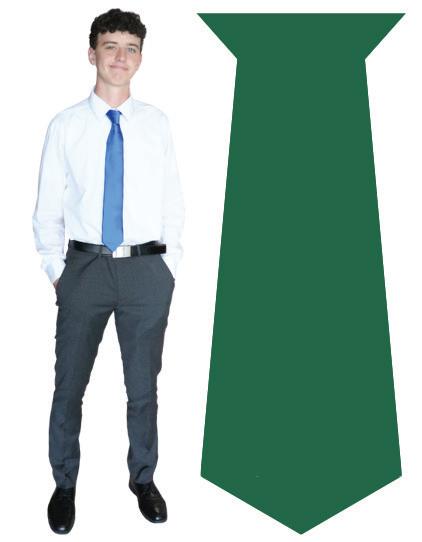
JUNIOR WILL FLAUGH
“I like it because I think it shows the whole school that we’re playing that day and makes the team look uniform. And to dress up, either the night before or two nights before the day of the game, I pick out clothes that are clean, not wrinkly, that make me look nice.”
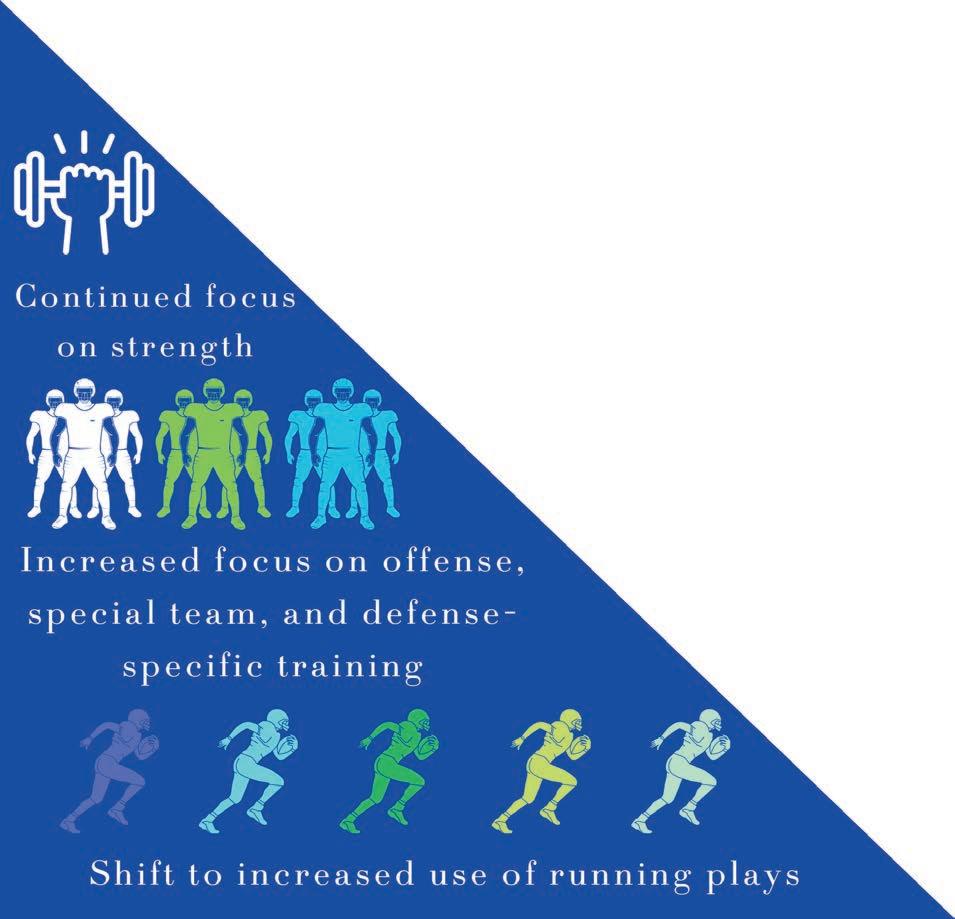
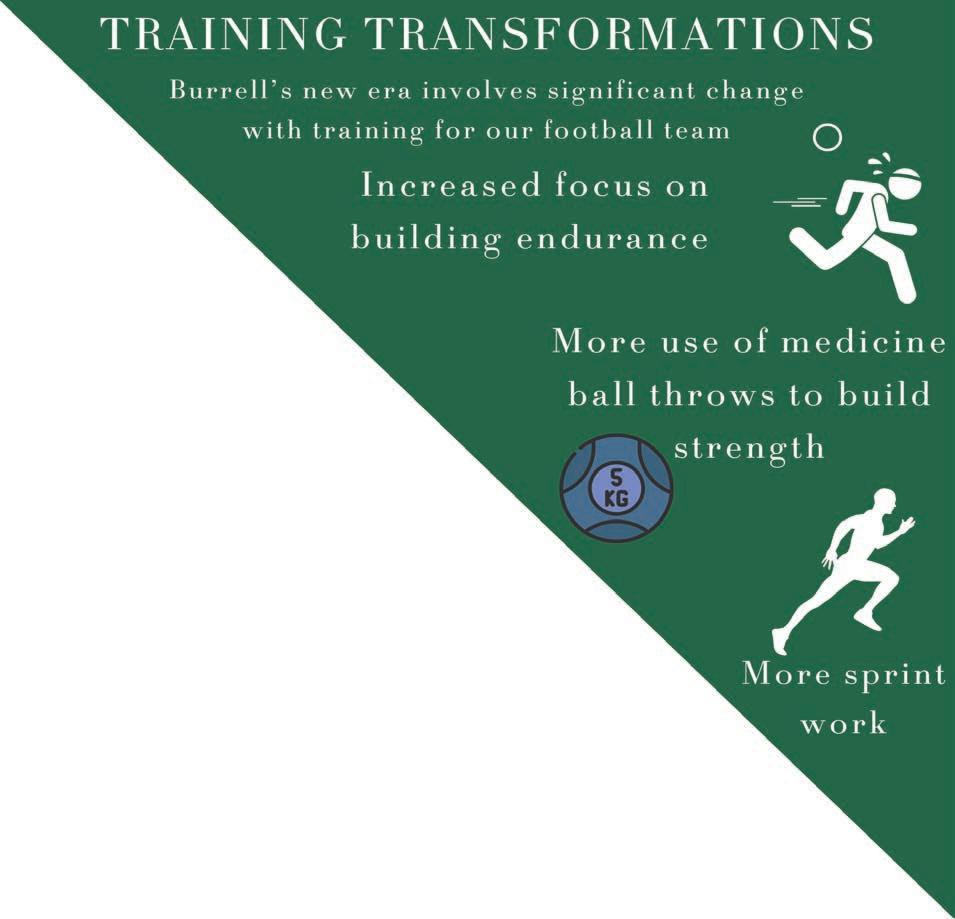
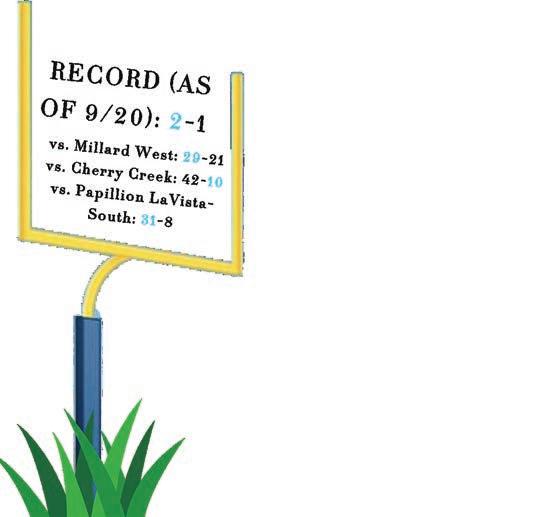
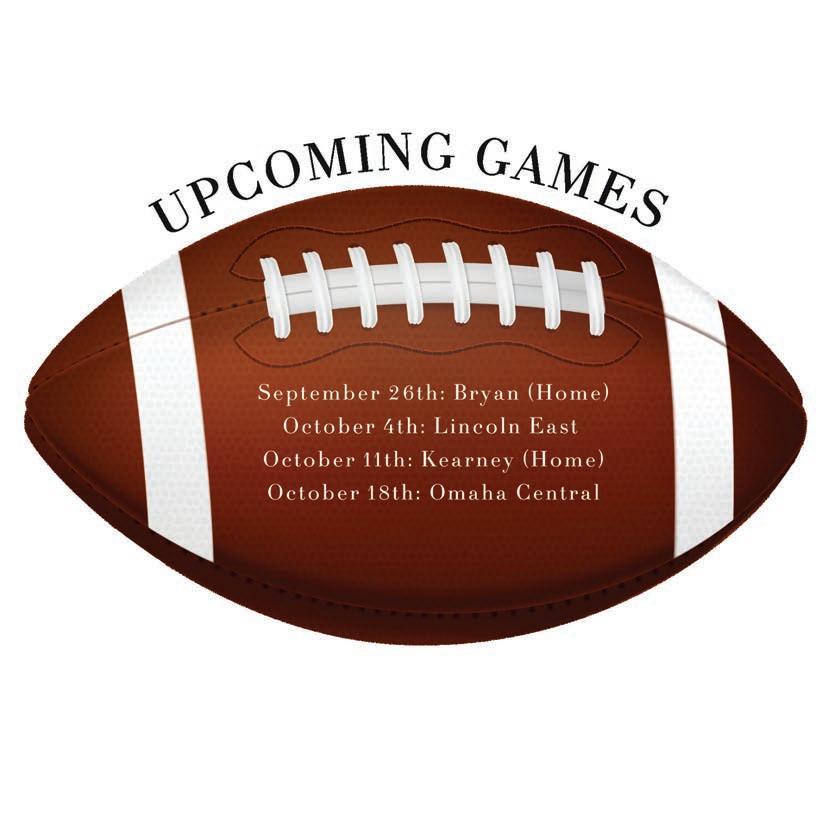
French students visit France over the summer to put their language studies to use and learn about French culture
KATELYN JUDD Staff Writer
The Mediterranean Coast splashes the group and runs beneath their feet, keeping them cool in the French heat. Tours of old castles and sightseeing famous monuments kept them company as they explore and interact with the beautiful, historic country of France. From Nebraska to Nîmes, Cannes, Avignon, Nice, and many more alluring cities, the French students travel.
From Lyon to Loire Valley and Paris, the students, again, travel. They attend Taylor Swift’s ‘The Eras Tour’, along with perfume factory visits, and local restaurant dining in between.

Bon Voyage!
French students pose on June 6 in Paris, France. The Eiffel Tower provides a picturesque moment for these European scouts. Photograph contributed by Tyrus Peacock
From May 29 to June 7, French students visited the marvelous country of France and applied the French they had studied for years to real-world scenarios. The students experienced slight challenges with the French language while visiting, but found ways around it.
“It was definitely a struggle, communicating with other people. But we tried our best and ev-
eryone understood we weren’t fluent in French, so they were patient with us,” senior French student Tyrus Peacock said.
Peacock had numerous interactions with locals in France, and describes them as instrumental in his French language skills development.
“At restaurants we would have to communicate with the waiters to order our food and order our drinks,” Peacock said.
French teacher Ryan Foehlinger knew that his students on the trip would be immersed in the language, which would, in turn, help tremendously with their French. Whether it’s simply asking for directions or reading street signs, Foehlinger explains that going to France helps put all of what you have learned together.
“In school, you learn a lesson, take a test, and then forget. But you realize [after visiting France] that it all comes together,” Foehlinger said.
France is the most visited country in the world and has been the leading country in tourism for many years. Foehlinger isn’t surprised as to why France gets so many visitors.
“[Paris], it’s the capital of art, it’s the capital of fashion, it has a natural beauty as far as landscapes, and architecture,” Foehlinger said, “It’s a beautiful country, there’s a lot of reasons [why] a lot of people love to go to France.”
With attractions like the Louvre, the Palace of Versailles, and the Eiffel Tower, who wouldn’t want to visit the “city of love”?
Some students even go as far as to say that the French language has changed their lives, and helped them in many ways, molding them into the person they’ve become. Se nior Madie Poloncic, who also at tended the France trip, has even committed to the University of Ne braska-Lincoln’s

secondary French education.
“[French] has really made me who I am today. Since I started these classes, I love it so much. I want to [teach French] for other people,” Poloncic said.
It’s no surprise that one of Poloncic’s favorite activities was the free time they had to explore on their own in each city, allowing her to practice her French with locals, which she will one day teach to others.
For Taylor Swift fans, it certainly was a “long time coming” since she had previously performed in France. The two picturesque cities of Paris and Lyon welcomed her and her record-breaking “Eras Tour” for three nights, and “all the stars aligned” so that the French students happened to be in Lyon for one of those nights, earning them a once-in-a-lifetime memory.
“It’s so cool to see how excited everyone is, even if you aren’t a fan [of Taylor Swift] it just makes you excited. It’s like a sense of community,” Peacock said.

The French Fad
France, the number one visited country in the world, attracts over 117 million tourists every year. This intense business brought in $69 billion dollars in 2023, with tourism numbers rising by the day.
Sources: World Population Review, Campus France
The sense of community that surrounded the French students wasn’t just at the “Eras Tour” but also was evident in every adventure throughout the trip. Even though the trip was ten days long, it’s clear that the memories will
“France was the best time of my life. I miss it every day,” Poloncic said.
Tour de France, Literally These are just some of the places explored by the French students this June. Follow the line to check out where the troupe visited this summer. Photograph by Priya Kukreja
Students stand out at Cornhusker Girls and Boys State, being elected to some of the most prestigious mock-offices
LYDIA HARLOW Staff Writer
Campaigning one dormitory at a time, connecting with everyone she can reach, senior Swara Dasari makes signs and gives brief introductory speeches. She converses with every delegate she can, spreading her network. The campaign takes almost all week. What is her goal? Being elected state governor in this week-long mock election process.
“[I] had to make signs and go talk to people on each floor. It was really tiring, but it was definitely how [running for public office] is in real life,” Dasari said.
Taking place June 2-8, these week-long programs, offered for both girls and boys, are called Cornhusker Girls’ State and Cornhusker Boys’ State, respectively. In these programs, incoming seniors from around the state gather at the University of Nebraska-Lincoln to learn the rights and responsibilities of a United States citizen, receive first-rate practice for public speaking, and gain a deeper understanding of the duties of holding public office.
They spend sessions campaigning, networking, and debating extensively. Participants file for mock offices, running for either a city, county, or state position.
Despite having people from all around the state running against them, Millard North still manages to stand out above the rest, being elected to some of the most prestigious positions.
This year, Dasari was elected Girls’ State Governor, along with senior Uyen Dinh serving as the Girls’ State Treasurer, and senior Luke Glasgow as the Boys’ State Governor runner-up. In addition, many other Millard North students filled essential city and county positions.
With so many people in attendance, substan-
tial amounts of networking are vital to obtaining office, particularly the prestigious state positions.
“There was like, 300-350 people, so I was going around table to table during lunches. I was going to different floors, trying to meet as many people as I can,” Glasgow said.
Candidates give speeches and participate in debates, explaining what makes them the most qualified for their positions in short, 30-second “elevator pitches”, as they’re referred to at Boys’ State. Each person has their own unique take, Glasgow not least of all.
“I went out and I started singing a song, and I got everyone to sing with me, and told them why they should vote for me. My thing was ‘Let’s go Glasgow,’” Glasgow said.
But before campaigning to the group at large, Boys’ and Girls’ State candidates must first be nominated by their affiliated parties, which are assigned at the beginning of the week. From there, each party has to create its individual party platform from scratch, which helps delegates learn how a two-party system operates. Since there are so many members gathered into these randomly assigned parties, candidates often have to balance drastically differing opinions.
“It really just comes down to understanding their perspectives more and incorporating them into your own. If you can do that, I think you can understand their beliefs,” Cornhusker Boys’ State delegate Ritwik Gupta said.
With all these differing viewpoints, communication and teamwork is crucial. Each person in the party has their own distinct background, with differing perspectives. This allows for meeting a collection of uniquely diverse people.
“I’ve always considered diversity in the aspect of people from all different cultures or back-
Ranging from government to music and more, these are just some of the accomplished Girls and Boys State alumni that have left an imprint in their respective fields. Both programs strive to instill leadership qualities while promoting service and leadership.
Photographs courtesy of Wikipedia, Teen Vogue, and Brittanica

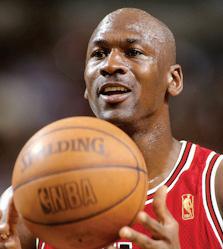
grounds, but I never really thought of it as people from like rural communities, and people who didn’t necessarily grow up in an urban setting,” Dasari said.
The difference between our relatively large city of Omaha and the much smaller rural towns of Western Nebraska causes students at these events to have glaringly different lifestyles and experiences.
Despite these differences, everyone still bands together to create an encouraging environment, focusing on mutual support and learning.
“It was very uplifting. Every single person was always trying to make sure that the other person was doing well, and [you] could always count on each other even though you just met,” Dasari said.
As a result of this unique atmosphere, even when not elected into the desired position, candidates still gain an outstanding experience.
“You can still be happy when you lose and you reflect on it. It was an unfortunate circumstance on why I lost, so kind of hard to avoid. But I’m not here to make excuses. I could have won, but I lost, so it was good [for] reflection,” Glasgow said.
No matter how personal campaigns go, the Girls’ and Boys’ State programs are worth participating in. With no financial cost to participate and lots to learn, it’s one of the most reputable and beneficial educational programs in our state.
A great number of Girls’ and Boys’ State graduates nationwide have gone on to be elected to public office, including state and national legislators, governors, and even presidents.
“You might feel intimidated at first, but don’t let that stop you from getting an amazing experience, because it truly was a great experience. I’m like so glad that I met every single one of those girls,” Dasari said.


HOSA Students put a wrap on their first year at the International Leadership Conference in Houston, Texas, reflect on their experience
ENZO CIRCO Staff Writer
At the HOSA International Leadership Conference (ILC), a selected group of aspiring students come together to compete and learn more about their passion for healthcare. Attending students can collaborate and come up with innovative solutions and ideas, inspiring one another to make a difference.
Taking place from June 26th-29th, the HOSA club was tested on their medical terminology, clinical duties, and healthcare skills. Some of the students took free exams to become certified in their respective fields. The students who passed the exam were able to gain some experience in clinical competitive events, gain insight into the fields they are interested in, and engage in healthy competition.
• Senior Vaibhavi Kota and Junior Nithya Khandavalli received the Barbara James Service Award Gold Level Recognition for 100-174 hours of volunteering at a local hospital
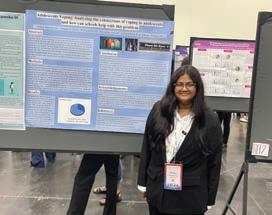
and HOSA Advisor Christina Preuss knows this is a part of what makes the organization so special.
“I wanted them to have a chance to network with other highschool students because, there was over 10,000 people that were at the event actually competing.”
This was one of Preuss’s goals going into the event and it shows the value of networking with other students from around the globe and sharing experiences, which, in HOSA, can be impactful to other students.
Science teacher Karlie Knoepfler volunteered to attend the event as a chaperone to assist Preuss through the trip. She recognizes the dedication the students have to enriching their knowledge.

• Junior Pranav Naveenkumar and Junior Samiksha Jayaraman earned Bronze level recognition for 250 hours
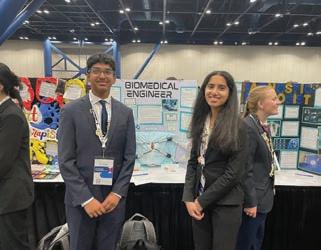
These compeitions involved a variety of different events, ranging from veterinary science to pharmacology.
To attend HOSA ILC, the students must take part in three preliminary competitions and place first at state. Only then they are able to qualify and attend the conference. Students must do this every year if they would like to attend ILC.
Although this was Millard North’s first year back at ILC, the team had some hefty goals they were aiming for.
“We’re all shooting for top 10. Some events had round components so you can qualify to round two or you go into round two or round one. Honestly, just placing in the top 10 and then qualifying for rounds was probably our main goal,” Junior Jude Ramsey said.
Although only a few students had reached round two, it shows the team’s resilience and ambition. Their experience reflects a commendable effort and puts an emphasis on simply building your healthcare skills. No matter the outcome, the team’s commitment shows that they fully embrace problem-solving and teamwork to build their skill in their event.
As HOSA continues to expand, its growth shows a broader perspective for the future of healthcare. Science Teacher
“You’re out of that school mindset in the summer. I can’t imagine, in the middle of July going to go take, a biology test. I think in general, HOSA students, especially like our Millard North HOSA students, are very focused and competition minded. So even though they’re out of that
school kind of mindset, they were still focused.”
In addition to this dedication, attendees are able to learn more about niche topics they are intersted in.
“I got to learn a lot more about AI in medicine and how it could and is being implicated and how it shouldn’t be implicated,” senior Noamin Ketaw said.
This is just one of many examples of curiosity and dedication coming from the HOSA students. Each student who attended ILC leaves prepaared to pave their way in medicine.
Knoepfler and Preuss found themselves amazed at what new kinds of development are in the works in the world of health and showcased at HOSA ILC.
“Students adapt little Fisher Price cars for kids who are supposed to get motorized wheelchairs. But because kids are growing, they can’t afford to replace motorized wheelchairs. I got to see a bunch of high school students adapt these official Fisher Price cars for little kids with disabilities,”
Through intense competition, collaboration and communication, the attendees strengthened their skills while making meaningful memories and connections. It is clear that Millard North proved themselves in more ways than one.
26-year-old man severely injured in downtown Omaha shooting (Sept. 17)
Bicyclist seriously injured after being hit by car near Leavenworth Park (Sept. 17)
U.S. Federal Reserve announces a half percentage point interest rate cut (Sept. 18)
11-year-old Florida student arrested for threatening to commit a mass shooting (Sept. 16)
Walkie-talkies explode in Lebanon attack, killing 20 (Sept. 18)
Georgia passes restrictive anti-LGBTQ legislation (Sept. 17)
Exploring Securly Classroom’s role in the management of MN student devices
THE HOOFBEAT
Staff Editorial
very student knows the feeling of receiving an in-class assignment that feels like it will take every amount of willpower you have left to complete. Avoiding the blank Google Doc, you flip to another tab with entertaining online games or the website to buy that cute top you saw at Village Pointe yesterday.
Next thing you know, the bell rings, and the Google Doc is still blank. The assignment becomes another at-home task, but you feel like your brain got a brief break and is recharged for the next 48 minutes of work.
But what if there was a way for teachers to always keep students on task, even online? This year, MN downloaded Securly Classroom to all district-issued laptops. Subsequently, students are no longer allowed to use personal laptops.
According to the Securly website, Securly Classroom is devised to address the unique challenges of modern learning, on any device, in any classroom. It empowers educators to regain control and cultivate an environment conducive to maximizing student learning outcomes.
But, as is true with new technological programs that have emerged, Securly is a double-edged sword. While it is beneficial to administrators and teachers, Securly may bring more hassle than help to students.
For example, one common use of Securly is
to limit tabs. Although this could prevent distractions, it also prevents multitasking. This is annoying to students who already finished the assigned task and want to work on other homework. With extracurricular activities and homework on their to-do list, multitasking is becoming even more important to involved students.
However, math teacher Mitchell Fricke shared that he limits tabs in the best interest of students. His five-tab limit ensures students are staying on task and actively learning. Securly also allows him to do other things like push an online graphing calculator to students so they do not have to buy their own expensive calculator.
From a teacher’s perspective, Securly has various benefits. Preventing distractions and academic dishonesty can be viewed as positives to the software, but the ability to view screens and search history raises a privacy question. The idea of someone watching your device constantly feels unsettling.
Assistant Principal Nate Wragge shared that Securly does not have any access capabilities that were not already available on district property devices. That being said, Wragge said that the purpose of Securly is not to monitor everything students do but rather to ensure they are staying focused and learning.
Both Wragge and Fricke shared that Securly records a lot of data that is valuable to teachers and administration. When trying to manage a

Student Speak WHAT ARE YOUR OPINIONS ON SECURLY CLASSROOM?
I think It’s a little excesssive. It takes longer to open and set up, it uses up too much time, and we worry about it too much.
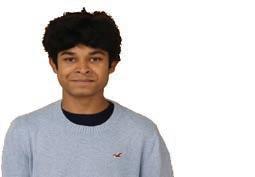
I don’t enjoy it. my micro teacher has us use it, and we can only have three tabs open. It sucks.
Naman Sharma Junior
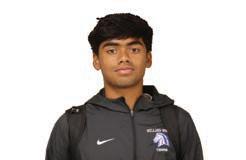
It’s a good and bad thing. they’re trying to stop people from cheating.
Carsyn Neitzel Senior

It’s not a big deal, they just don’t let us use our laptops freely. It’s not bad, but I don’t like it.
large school with many unique students, it is crucial to keep up with technological advancements like Securly.
Outside of these pros and cons, there is a lot of gray area surrounding the management of technology in school. One gray area is the question of what level of management is appropriate for what age.
While Securly is likely helpful to guide technological use for middle schoolers and underclassmen as they transition to new stages of independence, it would be advantageous for upperclassmen to learn to manage their technology independently.
Although Securly aims to solve the problem of in-class technology distractions, it can feel far from practical for older students. Being managed so closely feels like a trip back to our middle schools.
As a former teacher, Wragge shared that it is difficult to find an effective balance of independence and management for students. Securly is encouraged to be used in MN classrooms, but it is ultimately teacher discretion as to how much or how little they use the software based on their classroom needs.
With these complicated questions and equally complex answers, it’s obvious that technology management will always be a pressing issue in classrooms nationwide. As teachers continue experimenting with Securly, students will continue to adapt to new norms.
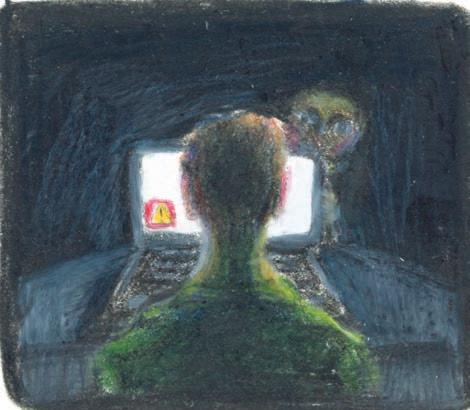
By Nadirah Johnson
Overly competitive youth sports and the emphasis placed on them by parents and

laying sports used to be fun. It used to be a way to get out pentup energy after a long day of school, spend time with friends, and do the thing you love; sports encouraged personal growth and self-confidence.
For many, that’s not the case anymore. Athletes are now confronted with a steady stream of unrealistic expectations set by intense coaches and overly involved parents.
A close friend of mine faced this with her team in early middle school. While sports have always been her passion, the competitive and overwhelming atmosphere of youth sports began to affect her.
Her coach’s unreachable standards and blatant favoritism nearly overpowered her love for the game. Practices became a source of stress and annoyance. All this led to her switching leagues and considering quitting altogether.
We are now confronted with a question: are youth sports becoming too competitive too early? If you want a chance to compete at the high school level, you need to have played on a highly competitive team for years.
Furthermore, highly competitive teams often require athletes to focus on a single sport yearround. Multi-sport athletes are becoming a thing of the past, yet specialization can be extremely harmful to young athletes.

Athletes in high-pressure environments are at risk for arthritis and tendonitis.
Early specialization is proven to lead to an increased risk of injury due to overuse. This kind of year-round focus on a single sport also drastically increases the risk of burnout.
Burnout is caused by excessive training with insufficient rest, and rates are skyrocketing among youth athletes. A recent study by the American Academy of Pediatrics (AAP) showed that at least 1 in every 10 athletes is suffering from burnout.
However, early specialization isn’t the only cause of burnout; parents and coaches also can have a sizable impact on their athletes’ mental well-being and internal drive. Intense coaches and their unrealistic expectations oftentimes ruin a young athlete’s passion for the game. By high school, it seems as if almost every athlete has experienced burnout to some degree. Talking with friends of mine, each shared stories about past coaches and varying circumstances that led them to quit.
Each had played different sports, yet all had experienced coaches who were overbearing and even unkind. The overarching similarity seemed to be that when overwhelming pressure was placed on them, it destroyed their interest in the sport.
Yet coaches aren’t the only ones putting unreasonable pressure on athletes. At almost every game, be it the most selective league or just a rec game at the YMCA, parents are on the sidelines calling out contradictory opinions from lawn chairs or bleacher seats.
While supporting and encouraging young athletes is a thing to be valued, there is a fine line to be walked. When parents contradict the coach this line is crossed, and it adds pressure on their kids and creates unnecessary confusion.
Even after the game, parents don’t always

get better. The greatest critics of young athletes seem to be their own parents. I have personally seen my teammates’ parents react this way to their childrens’ athletic showing. After an outstanding performance by a friend, watching them be berated by someone who should be their greatest supporter is devastating.
A study by the AAP showed a correlation between burnout rates and perceived pressure. When athletes feel that their parents and coaches measure their overall success on their performance, burnout rates increase drastically.
More often than not, burnout ends with athletes dropping sports. According to the AAP, while more than 60 million children and adolescents participate in organized sports, 70% of athletes drop out of these sports by age 13.
This is causing a loss of physical activity in teens and young adults, with 75% or more of U.S. teens not meeting the physical activity recommendations.
We need to move towards less intense, lower stress games to remedy this. Intramural or recreational games and leagues would help to combat these staggering statistics.
Unfortunately, many high schools, including ours, do not offer this. This is a mistake and we should start a program, possibly modeling it after the intramurals in many collegiate settings, such as the University of Alabama.
This would allow students to be more active in a low-stakes environment with less time commitment. It would provide a welcoming atmosphere for all levels of talent and experience.
If we can achieve that, we can recreate the focus on mutual respect, self-improvement, collaboration, and better mental health, restoring sports to what they should be: a place for kids to have fun.


Athletic girls may develop an unhealthy fixation on their bodies, leading to eating disorders and exercise addiction.
Sources: theonversation.com kindbridge.com trine.edu

Exploring how books shape thoughts and connections, impacting our past, present, and future
How the simple act of reading impacts this generation’s students in unassuming, yet powerful ways
MIRA MUKHERJEE
In-Depth Editor
The resonant sound of the bell fills the halls. Eyes glazed over, people walk in robotic-like movements, their pitter-pattering footsteps rushing to get to the next class. Jumbled thoughts accompany text-book-laden backpacks slung over hunched shoulders. Life moves like clockwork; hours pass by with little notice, days bleed together, and suddenly, entire years fade away.
But individual habits, however leisurely, can help individuals keep up with the fast-moving pace of today’s society. The simple act of reading, in particular, is one many can attest to.
“I believe there is a story for everyone, and it is my job as a librarian to help make those connections,” school librarian Rebecca Kegley said.
This is Kegley’s first year as the librarian; she previously taught social studies for five years. Daily interactions with students have allowed for increased conversation on all things literature.
“Students regularly come in to hunt books, talk about books, or recommend titles to read,” Kegley said.
Currently, over 1,064 books are checked out. For many students, popular sections in the library include mystery, thriller, and book-to-screen adaptations, all contributing to a sense of individuality and the ability to draw connections
“When you are reading a book, you see a million different reflections of yourself in other people,” English teacher Claire Aken said.
Aken teaches Literature and Film, Speech, and Honors English 10. As a teacher, the significance of reading can be seen in classrooms.
“When it comes to class, I think once kids get
to class that next day and can actually contribute thoughts and ideas. I think they realize it’s more fun when they have thoughts that aren’t somebody else’s, and they can provide opinions and discuss with people and debate constructively,” Aken said.
Having confidence in one’s thoughts and interpretations of literature allows for increased participation and self-awareness, which can have an array of effects.
“I think it definitely impacts empathy. It really is the epitome of walking a mile in someone else’s shoes, you’re literally inside someone else’s head and kind of going through their thought process, so it really helps expand your worldview,” English teacher Whitney Hansen said.
Teaching Contemporary Literature, Creative Writing, and Honors English 9, Hansen has encouraged students to explore a wide variety of literature.
“Books aren’t a monolith, they’re not all the same thing, so they might have an impression of what books are, and that might be boring and difficult and not for them or representative of them, but there’s more to books than they think,” Hansen said.
Connecting books to favorite movies or video games can help students foster an appreciation for reading and increase exposure to a diverse range of books, which advance student success in a multitude of ways.
“When it comes to writing or testing, I cannot describe how much reading outside of school impacts someone’s writing style and voice and also standardized testing scores,” Aken said.
Authors’ specific writing structures and voices allow students to see the endless possibilities in the structural components of writing, making it
-Reading for half an hour every day can lower blood pressure and reduce stress
-Incorporating reading into a night routine has been shown to improve sleep quality
Source: Healthline
more appealing.
“I think it shows an example of artist craft and why writers do the things that they do. It shows that not everything has to be written in a very oldschool, literary canon style,” Hansen said.
Individualizing one’s reading journey and writing style benefits students far more in the long run, for this enjoyment will coalesce into a greater impact.
“Reading has always been my gateway to knowledge and connection to the world around me,” Kegley said.
Actively reading helps society stay well-informed about pertinent issues and increases autonomy.
“Reading gives you a certain amount of agency and power in your life, from anything to reading legal documents and contracts to the news, it’s such a vital part of getting information in the world, so I think it’s important that kids continue to be wellread,” Hansen said.
Reading has both external and internal impacts, allowing students to be more updated, compassionate, and reflective in the frenzy of today’s society.
“You sat there, for so many hours, thinking with that book, conversing with that book and its author, and also conversing with yourself, that you want to pick up another one, and then keep doing it because you no longer have to just scroll and scroll and see life move back so much faster than you need it too,” Aken said.
Now, more than ever, it’s important to dedicate a little time every day to yourself. The process of reading looks different for everyone, but whether diving into bone-chilling thrillers or light-hearted romance, the effects of reading are bound to make an impact in this fast-moving world.
-A study found that regular readers were 23% more likely to live longer than those who are not



-Participating in thought-provoking hobbies, like reading, can decrease the potential of dementia
Source: Healthline
Daniela Ramirez Owen Reeves Nadirah Johnson Senior Senior Sophomore
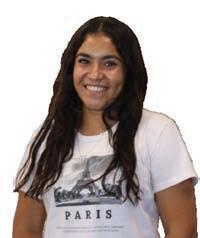
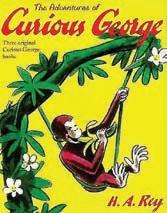


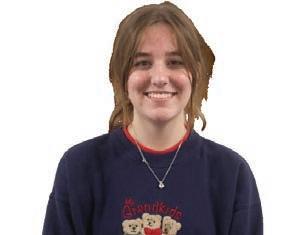

MAHDIS RIAZIKHAH Co-Opinions Editor
Walking down the rows of shelves, some had their heads engaged in a book, some were pretending to read, and some were looking for a book. A young boy sees all kinds of books in various colors and sizes. One type of book sticks out to him, a dragon displayed on the front. “Wings of Fire,” it says in red and bold font.
As a child, Junior Parker Neville was obsessed with the fantasy genre, finding the Wings of Fire series by Tui T. Sutherland at the school library.
“It [“Wings of Fire”] got me into reading for fun, rather than just something I had to do for school because the series is the first time I read for my personal sake and not something I was forced to do by my teacher,” Neville said.
“Wings of Fire” reminds Neville of a time of peace and a time of positive memories and according to an article from Medium, research shows that nostalgia can instill positive emotions, boost well-being, and present a delightful reminder of easy times in life.
Junior Jayden Linder’s favorite childhood book is “To Be Brave Like Ben Braver” by Marcus Emerson. The novel details a powerful narrative about finding oneself in a superhero world.
“It [the book] taught me the difference between fitting in and shining through a crowd, [teaching me] that you don’t need to fit in to belong somewhere, but you should be confident and embrace yourself or just be happy about what you have,” Linder said.
Both Linder and Neville learned valuable lessons about how reading can be pleasurable and “Medium” states that reading in childhood is fundamental in creating the cognitive part of the brain. Books develop critical thinking skills, extend vocabulary understanding, and encourage language acquisition.
One fond memory Neville remembers is spending time online, eagerly waiting for the next books to be released. He discovered the book around 4th grade and remembers checking online about once a week until the release day was announced.
“I got a lot of happiness and joy with it [the book] and always waited for the next book to come out,” Neville said. “The year I started this book was the year I got into fiction writing, I would say it [the book] did influence my earlier writing, it was inspired by the “Wings of Fire” series.”
Someone recommended the book to Linder, and when he read it, he noticed he had read it before and had enjoyed it.
“I remember I was in a moment when I didn’t have many friends, so I had time to read and when I read that book, it was a companion to me, like something that I could go to and see what’s next in a story,” Linder said, “I could connect with the main character Ben in the book and how he started as a loser and then became one of the best characters I’ve seen.”
Sophomore Jay Suhr’s favorite childhood book is the Percy Jackson Series by Rick Riordan. He got them from the elementary school library and heard about the series before.
Both Linder and Suhr have relatable charac-
ters to look up to when looking back on the books.

“All the books mean a lot to me and they were my first introduction to a common fandom I felt a part of and found friends with and a good part of my development,” Suhr said.
To Linder, the book ended satisfyingly. He learned not to judge the beauty of reading. Like TV and video games, books can be just as engaging and their words can immerse someone in them.
“It [the book] humbled me. It showed me books can be as entertaining as video games and TV because words have a lot of power to them,” Linder said.
Suhr enjoyed the action-packed moments and relatable characters and appreciated reading as an activity. The Percy Jackson series sparked his love for mythology.
“Learning about mythology was a big one. The writing styles in the books influenced my writing style and what I love to read. The main character had ADHD and dyslexia and I love reading representation like that,” Suhr said.
Suhr has been diagnosed with ADHD recently and appreciates the representation.
“When I was reading the Percy Jackson series, I didn’t know I was diagnosed with ADHD at that time. I found the characters relatable,” Suhr said. “I never knew that what the character did were signs that I was part of the script they were talking about,” Suhr said.
Childhood books are time capsules; we hold on and cherish them. Through time. people desire the times they can escape to an imaginary world and are naturally innocent.

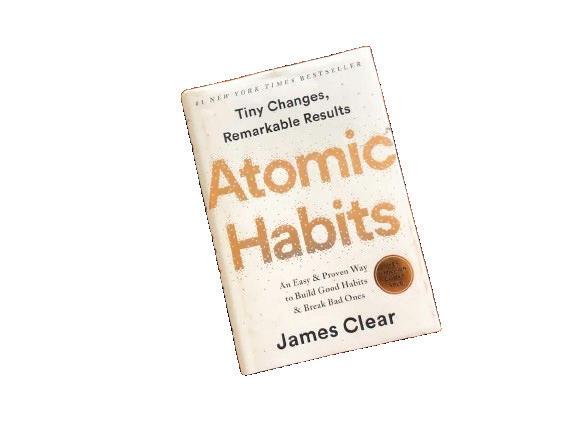




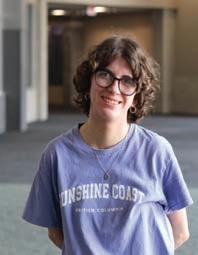
aslighting, romance, manipulation. A 2016 novel written by author Colleen Hoover tells the love story of Lily Bloom and Ryle Kincaid. Wait… did I just say love?
After her abusive father passes away, Lily leaves her small town in Maine and moves to her dream city, Boston. There, she meets Ryle and falls in love.
Everything is perfect until it’s not. Ryle seems like the dream man, but as their relationship progresses, Lily sees a side of him that reminds her of her father. In moments of anger, Ryle loses his temper and becomes violent to Lily. Yet, he brushes it off as an accident every time.
Lily quickly realizes that she is back in the life she’s lived before. Her father was abusive towards Lily and her mother, and Ryle’s actions trigger flashbacks of her childhood.
ing the reality of domestic abuse, or would the message get lost in “romance?” I decided to see for myself.
I do think there is some validity to the movie, as it is a lot more raw and honest about the topic and can really spark conversation.
In general, the movie followed the book closely, with many scenes depicted with the same power as the book did. One of the most powerful scenes is after Lily gives birth to Ryle’s child, and decides she will raise their daughter alone. She questions Ryle, asking him what he would say to his daughter if the man she loved hurt her.
The realization that he wouldn’t even be able to comfort his daughter is such a harsh reality. Breaking the cycle of generational trauma is a difficult decision to make. The relationship can have glimpses of sweet moments and can make it seem like the relationship is worth fighting for.

Controversy of the novel arose when Hoover published the book under multiple romance genres. What romance? The violence and gaslighting?
While Hoover defended her novel, saying “My goal was to portray the complexities of loving someone who hurts you and how leaving that person is often not as simple as it seems”, readers were not convinced.
When I saw a movie was coming out, I didn’t know what to expect. I wasn’t sure how the translation from words to the screen would play out.
Would the movie do a better job of portray-
Unfortunately, what Lily went through is a reality for some people. What I liked about the movie is that it didn’t downplay the significance of these experiences. Specifically, I just felt that this movie empathizes with those going through something similar.
I think it is incredibly important to spread awareness of domestic violence and allow victims to share their stories in a judgment-free, safe space. It is critical.
Overall, I think the movie explored the complicated intertwining between romance and abuse and highlighted the challenges that can arise from trying to leave an abusive relationship.
Victims may feel like they have to be loyal to their partner, fear leaving, or hope that someday they really will change like they always promised.
The movie changed my perspective on how toxic relationships can be portrayed in romance, and still send a meaningful and powerful message.
I would recommend this movie to anyone teen or above, but would advise against going into it thinking that the story will be lighthearted and romantic with everything being perfect.
The Hoofbeat staff will publish six issues of the paper at Millard North High School (1010 South 144th Street, Omaha, NE). Type is set with the use of Macintosh and HP computers. Printing is done by White Wolf Printing, Sheldon IA. The Hoofbeat is a member of the Nebraska High School Press Association and JEA. The Hoofbeat exists for the express purpose of student information and learning.
Advertising: Advertising will be sold at $7 per column inch or by special quarter, half, or full page rates. Information can be obtained by calling 402715-1404.
Responding to the Hoofbeat: Letters to the editor may be submitted to Room 1105 or sent to sacrotzer@mpsomaha.org. Names will be published. Letters must not contain attacks against an individual and may be edited for clarity.
Editor-in-Chief
Mia Castro
Front Page Editor
Anuj Singh
News Editor
Mia Castro
Opinions Editor
Mahdis Riazikhah
Teja Sridher
In-Depth Editor
Mira Mukherjee
Lifestyle Editor
Renia Pipinos
Sports Editor
Matthew Um
Online Editor
Sarah Robey
Adviser
Sarah Crotzer
Principal
Aaron Bearinger
Follow us...

Cartoonists
Brady Bredenkamp
Nadirah Johnson
Artists
Brady Bredenkamp
Nadirah Johnson
Photographer
Kai Pavlova
Staff Writers
Enzo Circo
Grace Evert
Lydia Harlow
Rhea Jain
Katelyn Judd
Sumanas Reddy
Kai Pavlova


Our biases have caused us to pick and choose where our empathy goes harming everyone

ANUJ SINGH
Front Page Editor
t’s a cycle we know much too well. A humanitarian disaster happens. A mass shooting occurs. The media spends a week paddling non-stop headlines about the unprecedented nature of the event. Social media runs amok with messages of action and outrage.
Not even a few days later, it all falls away. The world moves on to a different topic and event, even when these people continue to suffer and no change has been made. As a culture, we lose our empathy for these people and forget about them entirely.
Empathy is one of the most basic human values, an emotion that differentiates us from other primates. Yet we have chosen to withhold this essential trait from others.
Whether it's due to compassion fatigue onset by repeated exposure to traumatic events on the news or a Eurocentric focus for the world’s media, we have decided that certain people deserve our empathy, effectively dehumanizing everyone else.
Paris Nanterre University graduate student Julien Brugeron defines this phenomenon as selective empathy. She explains that this choice of where we direct our demonstration of understanding for other people’s experiences can originate from a distance from the subject of our empathy.
One cause of this issue could be our collective compassion fatigue. In a 2022 American Psychological Association article, author Rebecca A. Clay delineates this term as the process through which we take on the suffering of other people or individuals, either through direct conversation or through exposure via media like the news.
Health writer Jamie Ducharme explains how experts believe that almost the entire world, after going through the devastating COVID-19 pandemic and amid numerous global conflicts, has reached a point of total compassion fatigue. She goes on to detail how repeated exposure to such horrible events has taken a significant toll on our emotional capacity, preventing us from even attempting to understand what the people around us are going through.
Another major contributing factor is our inherent desire to categorize everything around us. In a January 2021 Forbes article, professor of clinical psychology Dr. Andrew Hartz calls this behavior splitting, originating from our hunter-gatherer roots. Through ‘splitting’, we could differentiate between who was part of our tribe and who was our enemy.
However, in a time when bison have been replaced by Big Macs and spears by SnapChat, we no longer have a use for this instinct. Instead, it causes us to label the people around us as either part of our group or as the outsiders, the others.
The harms of this empathy epidemic can be seen directly in our understanding of global issues. One of the most covered recent events, and rightfully so, was the Russian invasion of Ukraine, which led to the displacement of millions of people.
But despite the importance of highlighting the suffering of the Ukrainian people, the media coverage of this issue was also concerning. Journalists on air from channels ranging from Poland to France to the United Kingdom expressed their shock at the conflict, calling Ukraine “civilized” and saying Ukrainians were “like us”.
The comparisons they made were even more dehumanizing, stating that Ukraine wasn’t “like Iraq or Afghanistan” and that “we aren’t talking about Syrians fleeing…we’re talking about Europeans leaving in cars that look like ours”.
But just because someone doesn’t look like us does not mean we can minimize their experiences. But the truth is that no matter what place someone is from, their issues are valid and we should try to understand them.
Thinking like this normalizes tragedy in places outside the West, simply excusing it as part of the culture. But the truth is that no matter what
place someone is from, their issues are valid and we should try to understand them.
It doesn’t matter what part of the world they’re from. They are humans, just like us. That is what we have forgotten. In our quest for similarity, we have lost our shared humanity.
We ignore the suffering of refugees because they don’t look like us. We overlook the devastation of school shootings because advocates for gun reform are on the opposite side of the political aisle. We minimize experiences of police brutality because it’s not what we go through. And as a result, people die and suffer every single day.
It is high time that we stop choosing where our empathy goes. We cannot simply ignore the struggles of people who aren’t like us. It is our responsibility as humans to make the effort to understand those different from us and to empathize with them.
The ability to empathize and understand each other is what makes humans different from every other species. We are built to care, yet we have strayed from our primal instincts.
As an October 2019 Manoa News article explains, we can return to what they call ‘universal empathy’ through two main steps.
First, we have to begin practicing perspective-taking, meaning we put ourselves in the shoes of people completely different from us and try to understand them and their experiences.
Secondly, we need to expose ourselves to diversity, through purposeful media selection. Choose to watch movies and read books about groups you might not know anything about.
If we can do this, we can create a world where everyone is cared for and understood. We can finally put an end to our cycle of tragedy and create a better, more empathetic world for all.
Why are we entering an empathy crisis?


Collective Compassion Fatigue: where we take on the suffering of others via platforms like the news, or by conversing face to face.

Thinking other people’s issues are not valid: this happens when someone disregards someone else’s experiences, normalizing tragedy.

RHEA JAIN Staff Writer
From hearing the drip of the IV bag to the prodding of sharp needles into her skin, English teacher Monica Kauffman overcame many challenges last year. Her health journey turned a corner leading her to a fresh start, with radiance and energy for another school year.
“I’m excited to be back. I was so sick last year, but I just pushed through it,” she said.
After countless doctor’s appointments and relentless periods of pain in the fall of 2023, Kauffman became sick, leading to her hospitalization at Lakeside Hospital on Oct. 9. She was diagnosed with kidney failure, a condition in which the kidneys lose the ability to remove waste and balance fluids. This diagnosis meant Kauffman had to begin dialysis, a harsh process that completed the work of kidneys. She did dialysis for three hours, three times a week.
Bergan-Mercy until she was transferred to Madonna Rehabilitation Center. After 10 days, she was discharged and was required to do outpatient physical and occupational therapy sessions.
“I was happy I wasn’t hooked up to all the machines, but I was also worried about if I went unresponsive. I was scared and wanted to get home, but deep down I was worried I never would,” she said.
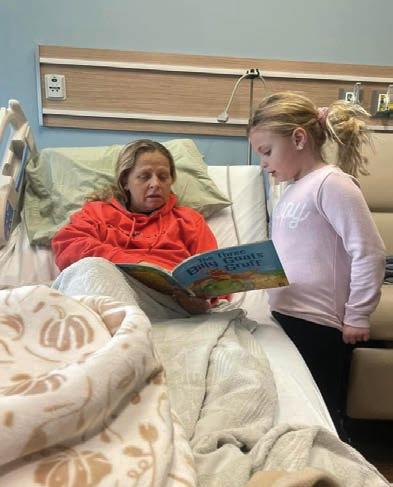
Alexa Kauffman, a first-grader, eagerly reads “The Three Billy Goats Gruff” aloud to her aunt Monica, who watches with a smile. Alexa has just learned the story and wanted to share it with her aunt.
Photograph contributed by Monica Kauffman
“Dialysis was a love-hate relationship. I loved it for the fact that it kept me alive, but I hated the fact I had to give up so much time with my family every night,” she said.
The situation worsened and she was admitted at CHI Lakeside for 12 days, she fell into a coma with quadruple organ failure.
“My kidneys were shutting, and so were my liver, lungs, and heart,” Kaufman said.
Kauffman also delved into the horrific dreams that she had during her coma.
“I had horrible dreams… I was fighting death in all of them.”
She was transferred to CHI Bergan-Mercy to receive more intensive care, waking up from the coma on Oct. 30.Kauffman spent 16 days at
She remained on dialysis for the next several months, throughout the winter and spring. While on her dialysis treatments, Kauffman remained fiercely committed to staying positive and going above and beyond to support her students in every way she could.
“I took that positive mentality the whole way through… being here kept everything normal,” Kauffman said “Even when I didn’t feel good, I knew I had to go. I have something to do here.”
Her ‘something’ was her students. Through every smile and frown, Kauffman pushed through the pain and hurt, writing plans and lessons for her substitutes and students.
Senior students in Kauffman’s AP English Language and Composition class continued to show determination throughout her absence.
“Mrs. Kauffman set clear boundaries from the first day, which were carried throughout the school year,” Senior Natalie Shnayder said. “We were always on task, even when she was gone, and those expectations helped us achieve a 90% pass rate on the exam.”
During this time, the students were helped by other teachers at MN. English teacher, Michael McCauley, was a resource for supporting Kauffman’s classes during
her absence.
“I would often use my free period to teach her class, and even though she wasn’t always present, she set these expectations allowing her students to thrive,” he said.
Although her students were meeting high academic standards, Kauffman was still fighting. She realized that she wouldn’t be fully recovered unless she had a kidney transplant.
After months of doctor’s visits, labs, and evaluations, at 11:38 AM on May 15th, 2024, Kauffman was officially listed on the transplant list.
“I went on with my day and at 11:38 AM on May 16th, I got the call from UNMC saying they had a kidney for me.”
Kauffman reminisces on the emotions she felt during that moment.
“I was so excited to get the call because I knew I was one step closer to getting better. My sister was here at the school and I told her… she was excited, everyone in that office celebrated because I was listed.”
“While getting my blood taken in one arm, I was writing my sub plans for the last days of school,” she said.
After months of waiting and relentless pain, Kauffman was finally getting better, having received her new kidneys. Her nurses told her the new kidneys were small and had ‘no miles on them’, indicating that the new pair were possibly from a young child.

Sebastian Kauffman stands with his mom, English teacher Monica Kauffman. She had just left the hospital the night before and made it just in time for Sebastian’s graduation.
Photograph contributed by Monica Kauffman
“It was really weird… I wasn’t sure how to feel since I was feeling better after being in so much pain, but I couldn’t imagine the pain the family was going through.”
Still, time moved forward, and eventually, after months and months of pain and hurt, Kauffman could finally return to her ‘normal, like going to football games and even dropping off and picking up her kids..’
“I’ve learned to never take anything for granted… every day is a gift,” she said.
Meet the talented MN Mustang Twirlers as they share their journey, passion, and the strong bonds that fuel their success
TEJA SRIDHER
Co-Opinions Editor
atons glisten under the stadium lights, catching every flicker as they spin through the air. The crowd’s murmur quiets as the MN Mustang Twirlers take their positions, their shimmering costumes sparkling as the spotlight illuminates their faces. For many in the stands, the performance these four girls are about to give will be their first glimpse into the mesmerizing world of baton twirling.
These girls are part of the MN Mustang Twirlers, a baton-twirling team led by coach Jamie Baustert. Their tight-knit relationships with each other have made the activity more enjoyable as a whole. Sophomore Mia Stapp strongly resonates with this as well.
“Our team culture is super positive [and] everyone brings something new to the team. Everyone has a say in what we do; we all communicate well about performances and what we want to do in routines. We all worked super hard to get to where we are now, so everyone really loves and respects each other,” Stapp said.
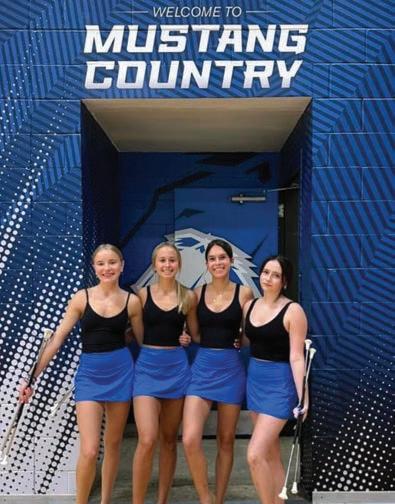
Terrific Team
next-door neighbor, Marissa. I remember being 5 years old and watching her practice twirling outside. I knew from that moment that’s what I wanted to do [and] I was so happy watching her. I thought it was the coolest thing ever. Ever since then I’ve continued twirling and have continued to love it,” Stapp said.
Dalton’s involvement in baton twirling was quite different from the others.
“When I was 4 and doing gymnastics, my mom saw a flier for an open house at Sue’s Stepperettes. We attended and the environment was very welcoming, so we tried a class and the rest is history. Claire and I were fortunate enough to attend a Nationals Competition at the University of Notre Dame, which was amazing and very memorable,” Dalton said.
Mia Stapp’s favorite trick is juggling three batons, and she pulls it off like it’s no big deal. She always adds her own flair, making it look exciting and entertaining to everyone watching.

Sophomore Mia Stapp, Claire Savage, Cloe Dalton, and Freshman Libby Fox pose in front of the new “Mustang Country” door. They just finished performing at the freshman pep rally.
They aren’t just teammates; they’ve been dancing and twirling together for years at the same studio, building bonds that go beyond the field. Sophomore Cloe Dalton, who has been twirling since childhood also relates with this.
Photograph by Jaime Baustert.
“There are three sophomores in the group: me [Dalton], Mia Stapp, and Claire Savage. We have all been twirling at Sue’s Stepperettes at some point in our journey,” Dalton said.
This talented group of four also exhibits their commitment to this activity, by attending practices typically twice a week. Freshman Elizabeth Fox enjoys practicing with her fellow team members.
Their commitment to the sport is evident, with practices how often they practice. Fox finds these sessions essential not only for skills but also for bonding with her teammates
Aside from the commitment this activity has to offer, each of the girls has their backstory on how they got into this activity in the first place.
“What personally got me into baton was my
This talented group of four performs at many events, from school pep rallies to national competitions. They bring their talent-packed routines to the Stepperettes Annual High School Showcase, Millard North Dance Team annual showcase, Millard Days parade, football games, and some basketball games.
“You’ll find us performing pre-game at the home varsity football games and during halftime. My overall experience in these performances is positive and fun. Our student section is encouraging and energizes us,” Dalton said.
Their passion spans beyond playing games and practice. The group of four wants to get others more involved in this sport too.
“This sport takes a lot of hard work and dedication so if you want to learn more about yourself and your strengths this would be great for you,” Stapp said.
With their commitment and camaraderie, the MN Mustang Twirlers continue to make strides, bringing their sport into the spotlight. As their skills and confidence grow, so does their potential to inspire others. The future looks bright for these four girls, whose passion for twirling extends far beyond the field.

With practice Libby Fox has perfected one of her favorite moves involving twirling two batons simultaneously while striking various poses.
Cloe Dalton’s standout move is a flawless 2-turn. With a quick spin and perfect timing, she makes it look effortless, leaving a lasting impression on anyone watching.


Though simple, Claire Savage enjoys performing a basic leap. She brings a unique flair to it, making the
A sweet journey through time in Omaha’s Old Market
ARGYRENIA PIPINOS
Lifestyle Editor
estled in the heart of Omaha’s historic Old Market lies Hollywood Candy, a store that’s far more than just a place to buy sweets. This nostalgic treasure trove offers visitors a trip back in time, filled with retro candies, vintage movie memorabilia, and quirky collectibles. It has become a beloved destination for locals and tourists, captivating all who enter.
From the moment you step inside, you’re greeted by a colorful display of candies that stretch on endlessly. Shelves are packed with classic treats like Necco Wafers and Moon Pies, as well as modern favorites. But the experience goes beyond candy. It’s a journey through memory and imagination.
“We wanted to create a place where people could relive their childhood memories,” Hollywood Candy owner Larry Richling said.
His passion for nostalgia is evident in every store corner. From vintage toys to antique arcade games, Hollywood Candy offers a unique blend of sights and sounds that evoke fond memories.
“Last time I visited [the store] it felt as if I had just teleported to the ‘60s; it had such an old-timey vibe [and] everywhere I looked I saw a toy from my childhood and arcade games I have always wanted to try but never had the chance,”
junior Sanna Kunnath said.
Richling’s vision for Hollywood Candy extends beyond sweets. The store also features a mini-theater that screens classic films, providing a cozy retreat for movie lovers. There’s even a vintage soda fountain, offering old-fashioned sodas that enhance the retro vibe.
“We want people to feel like kids again when they walk through the door,” Richling said. “The store is designed to offer a break from the fastpaced world outside, allowing visitors to enjoy a moment of pure happiness.”
Hollywood Candy has become a staple of the Old Market, drawing in a diverse crowd of visitors. The shop’s unique charm and character make it a must-see attraction.
“Hollywood Candy is a big part of what makes this area [the Old Market] special,” junior Aditi Jaras said. “Every time I’m in the area we have to stop inside.”
Richling is also a strong advocate for preserving Omaha’s historic districts. He believes that places like Hollywood Candy are crucial to maintaining the city’s cultural heritage.
“The Old Market is one of Omaha’s treasures, and we’re proud to be a part of it,” Richling said.
In addition to candy and collectibles, the store offers unique experiences that set it apart from
other stores. Visitors can enjoy vintage arcade games or explore art installations like a life-sized Elvis Presley statue right next to his well-known bright red 1967 Cadillac. These surprises delight guests of all ages.
“There’s something magical about playing an old pinball machine or watching a classic movie,” Kunnath said.
While Hollywood Candy is rooted in nostalgia, Richling is always thinking ahead. He plans to expand the store’s offerings and introduce new events.
“We’re always thinking about how we can make the experience even better,” he said. Richling’s dedication ensures that Hollywood Candy will continue to evolve and delight visitors for years to come.
As Hollywood Candy remains a beloved store in Omaha’s Old Market, it offers a charming getaway from the everyday hustle and bustle. Richling’s commitment to preserving the charm of the past, while looking to the future, makes Hollywood Candy a destination that will continue to bring joy to all who visit.
“Hollywood Candy is more than just a store; it’s a destination,” Richling said. “We hope to be here for many more years, bringing happiness to everyone who walks through our doors.”


SARAH ROBEY Online Editor
volleyball assistant coach returns as new varsity coach, dives into the team’s season goals
s you enter the gym, you are surrounded by the sounds of athletes preparing for a productive practice. Players set up nets, run into locker rooms to grab last-minute gear, and happily chat while awaiting for the arrival of their new coach.
This year, Lindsay Grant returns to lead the Mustang squad, but this time takes on the role of the new varsity volleyball coach. As the 9-year assistant coach at MN, and head volleyball coach at Bennington for 3 years, Grant’s return has been off to a good start.
“It’s been fantastic. I got kind of back into the swing of things springtime, and so we were able to run some spring training. [By] summer it was full go with open gyms, camps, team camps, and then tryouts,” Grant said.
With practices every day after school, the volleyball team is working hard to meet their goals for the season.
“We set some pretty lofty goals. Being able to qualify for state is one of the varsity goals, but we really took a step back and we looked at our core values… family, hard work and integrity. As a full program, it’s really working to implement those core values,” Grant said.
To be able to reach these goals, the volleyball team is dedicated and motivated at each practice.
“We plan to reach these by believing in ourselves and each other, working hard in practice, and being intentional about everything we do,” Grant said.
With spring and summer training already in swing before the 2024-25 school year started, the players, and Grant, got to know each other before the official start of the season.
“That’s probably one of my favorite things, is
those relationships that you build, and getting to know them, them getting to know me, and not just me as a coach, but me who I am as a person as well,” Grant said.
Going into her sixteenth year of coaching, Grant has helped many players pursue their passion for volleyball and in their daily lives.
“I love the impact that you can make on student athletes, both here in the gym, but then how it impacts them in the classroom, how it plays a factor as they transition into college and being adults, and the skills that you learn while being an athlete,” Grant said.
For the players, her influence has been noticed and is appreciated as the girls continue to follow their volleyball journey.
“She’s very motivational and she helps you with whatever you need, she’s like an open book,” junior Sydney Rogokos said.
Having those connections as a team is very important. With team exercises always being valued part of the program, continuing to bond and build those relationships are meaningful to the coaches and players.
“Recently, we did a team exercise where we each wrote a letter about who we’re dedicating our season to and who’s really important to us. That was a really positive moment for our team and our coach because she [also] shared who she was dedicating the season to for all of us to bond and have a connection as a team,” senior Julia Perju said.
Along with team bonding exercises, the volleyball program continues to build on its strong team traditions.
”I love the tradition of Millard North. I love how it’s a sense of community with the program, where from varsity all the way through the freshman
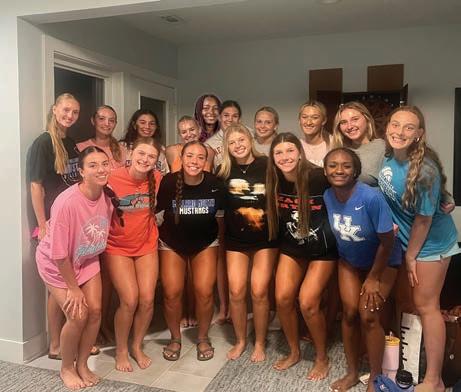
Together
The volleyball players share a moment together. Friends both on and off the court, the team comes together to unwind and bond after intense matches.
Photograph contributed by Adelle Fry
team, they all know each other,” Grant said. Although this is just the beginning of the season, Grant has many ideas in mind to improve the program.
“I want to continue to improve the culture, continue to elevate the level of play, and continue to put focus on ball control. I want volleyball athletes to want to come to MN and be proud to say they are a Mustang,” Grant said.
As the season continues with Grant in the lead, the team is in good hands as they push on to show what it is to be a Millard North Mustang.
How
did it feel
beating Papillion-La Vista for the Softball Metro Conference Championship?
Carley Stych Senior
“

We got our redemption and I think it just gave us the energy we need to win a state title this year.We still have work to do in order to reach our team goals, but this was a huge step in the right direction.
Jayda
Junior
It
Juarez
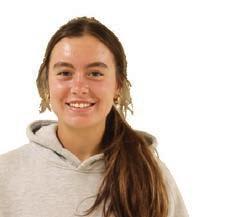
definitely felt really good, and it was like a get back at them for
Abby
Beard
Sophomore
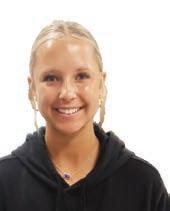
Going into it was a revenge game. It was a complete relief to say that we run-rolled the team that beat us at State and ended our season. It was an amazing team win.
Macey
“
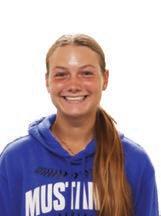
Jarose Junior “
It felt really good because obviously last year we lost to them at State. It felt good to just beat them at our home field, get redemption, and win the Metro Conference Championship.
MATTHEW UM
Sports Editor
aturday morning. A sweltering 90 degrees outside. The cross-country team getting ready to run their 15 mile long run of the week.
Half marathons are long distances that take a lot out of the runner. So seeing a high school team do them regularly on weekends, with an extra two miles attached, is nothing short of shocking to the average person.
It hasn’t always been this way.
“Past years, I’d run maybe five or six miles max,” senior Ella Jonas said.
The change is owed to a change in leadership. Coach Brian Yueill, after coaching the boys distance track team in the 2024 season, has joined as a cross-country coach, introducing a new running program with him.
“The basic idea for the running program is starting off building the aerobic engine, which is easier miles,” Yueill said. “Then we start adding in threshold works, so you get your ligaments and tendons to withstand the next part, which is the high intensity lungs, legs, everything on fire.”
This initiative differs greatly from what the cross country team has done in past years.
“My peak, on Saturday, I would run 15 miles, which is insane,” Jonas said. “Comparing that to my years before, I didn’t run that much.”
During last year’s track season, when the program was introduced, there was lots of positive progress. Many students have seen great improvements with the training regime.
“I definitely have noticed a big change. I PR’ed by a minute in the two mile and by 30 seconds in my mile in track,” Gotschall said.
Yueill too has seen massive improvements in his runners under the new training program.
“This season, we’ve only had one meet. There were tons of PR’s in that meet.”
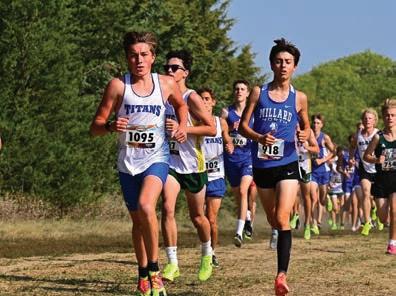
Junior Dylan Lee hits his stride during a cross country meet. Lee was one of the many that PR’ed under the new training program.
Photograph contributed by Dylan Lee
“My running programs were always very structured along these lines, “ Yueill said. “I came up with a program during track that was much like this, and Coach Janda and Coach Wright, and I made it work for our kids in cross country.”
While it is a step up in difficulty, senior Adam Gotschall wholly supports the new program.
“It’s to improve your form for running, and it builds a lot of endurance. I think that’s what he’s trying to get out of it.”
Gotschall enjoys the scheduled aspect of the program, as well as the more intensive running.
“Mileage has definitely been upped. It’s become a lot more structured and predictable to where I can guess what we’ll be doing for the rest of the week,” Gotschall said.
But this upped mileage is far from just a few more miles a week. The team went from six miles as a long run to a normal run.
However, while the benefits are undeniably showing improvement the flip side also comes into play. With extra miles, the chance of being injured has definitely increased.
Sophomore Lucas Day, one of last year’s strongest runners, is currently injured due to overuse.
“I’ve been having ankle problems a while now…[it’s been] over a month…and it’s gotten really bad recently,” Day said. “If it gets worse, I don’t know what I’m going to have to do.”
Day said he just ran too much, as the miles under this program were incredibly long and strenuous.
“We ran a lot of miles this summer. It was probably just hard on the ankle,” Day said.
Although injuries have been prevalent, many seem to agree that they are an avoidable part of the process.
“Well, as mileage goes up, risk of injury goes up. [But] If you are still smart and responsible about it, you can prevent injuries,” Gotschall said.
Yueill too repeats the same philosophy.
“The other key piece to any successful training program is you need to take care of the basics: enough sleep, eating correctly, and hydrating correctly. You have to have those other pieces so your body can fix itself. I think we have a lot more opportunity there to improve,” Yueill said.
In the end, the cross country team’s new program has been successful, even in the face of injury and adversity. With the new training program, it will be exciting for the team to see what new distances they will cover over the season.
WEDNESDAY
THURSDAY
FRIDAY
A peek into MN athletic field’s new entranceand what it means for some programs
SUMANAS MARAM Staff Writer
or fans and visitors attending school sporting events, the game-day experience begins long before the first whistle or first serve. The journey towards the fields and courts sets the tone for what’s to come.
At the forefront of it all is the entrance, which serves not only as an access point but also as a statement of school spirit, pride, and professionalism.
That’s why MN’s creation of the new entrance by the fields and tennis courts is not just a construction project, but rather an investment for how it presents itself to the community. It was a goal for the school to create a better experience for everyone and make something that stands out.
“The main objective was to try and make an entrance to the facility so that everyone would be able to identify where it was. There have been many questions in the past of how to get to the field or where the entrance is and now it will be clearly identifiable,” Activities Director Keith Maly said.
However, there are other benefits to the new entrance. There are hopes it will attract more individuals and create an outreach for MN athletics.
“The design is to make it look more like an open plaza. There will be a black fence with a banner on the top indicating Millard Athletic Complex,” Maly said.
The unique concept that the administration has in mind is meant to lure new student-athletes and other individuals into the area.
“I feel it will help engage more interest not just in the MN community, but the outside organizations that want to use our
facilities. Attracting outside people sparks interest in our school and more people might be interested in attending MN in the future,” Maly said.
Student-athletes currently at the school are already excited about the development of the new entrance. The many new aspects coming with the construction will add a lot to their practices and game days.

“The thing I’m most looking forward to for the new entrance is the new fence around the field. The old one was very worn out, and I think the new one will make the overall impression of the field more professional,” senior baseball player Myles Bunjer said.
These athletes believe that this development could mark the start of a new culture arising in MN athletics.
“I think the new fence will help us play to a higher standard. When we have equipment and a location that we can be proud of, it definitely improves our self-confidence as a team,” Bunjer said.
Yet, before all of this can happen the construction needs to finish. In the meantime, teams currently practicing near the new entrance have had to make adjustments during practices and real matches.
“We have had to store our equipment in a different place that is not that convenient, and we have to watch balls that get into the dirt and mud,” Head tennis coach Scott Orlando said.
The expected completion date for the entrance is November 1st, but it is dependent on the weather conditions. Until then, these teams are making adjustments to accommodate the construction.
“I am looking forward to what the new plaza brings to us and can’t wait til all the construction is gone so

Captivating Complex
This is a visual rendering of what the Athletic Complex will look like. The project is expected to be completed by November 1st.
Photograph contributed by Keith Maly
we can use our storage again and so it opens up more parking spaces,” Orlando said.
Even though these changes are inconvenient, everyone knows it is for the betterment of the school and community, and they encourage the construction as it becomes closer and closer to its finish.
“I think once it is finished it will look really great. I think I speak on behalf of all the other players and coaches: It will help all teams and all spectators when they come to watch sporting events here at Millard North,” Orlando said.
Overall, this project starts a significant improvement for MN and shows the dedication of our community to ensure that the facilities match the high standards of the school’s athletic programs.
“MN is grateful to our administration at our district office for developing and overseeing this project to help enhance the appearance of our outdoor facilities,” Maly said.
The progress of this entrance is an encouragement to our school and athletics. It’s a gateway that’s opening to the future of our community.
After completion, the new entrance will look very different.
• A fence with a banner at the front.
• Two brick pillars in the front, bearing donor names.
• New seating area in the plaza.
• New paved area near football field with potential additional bleacher space.